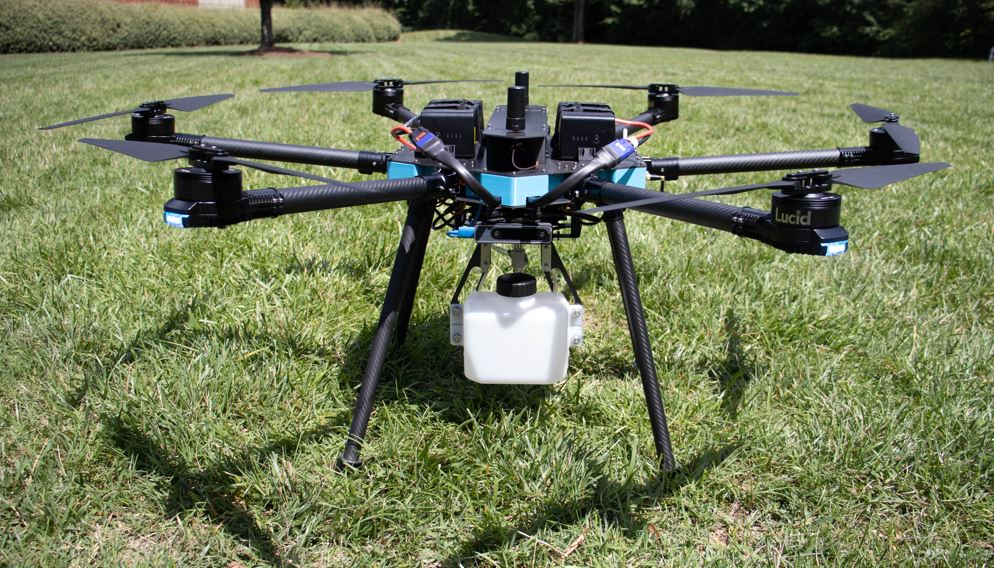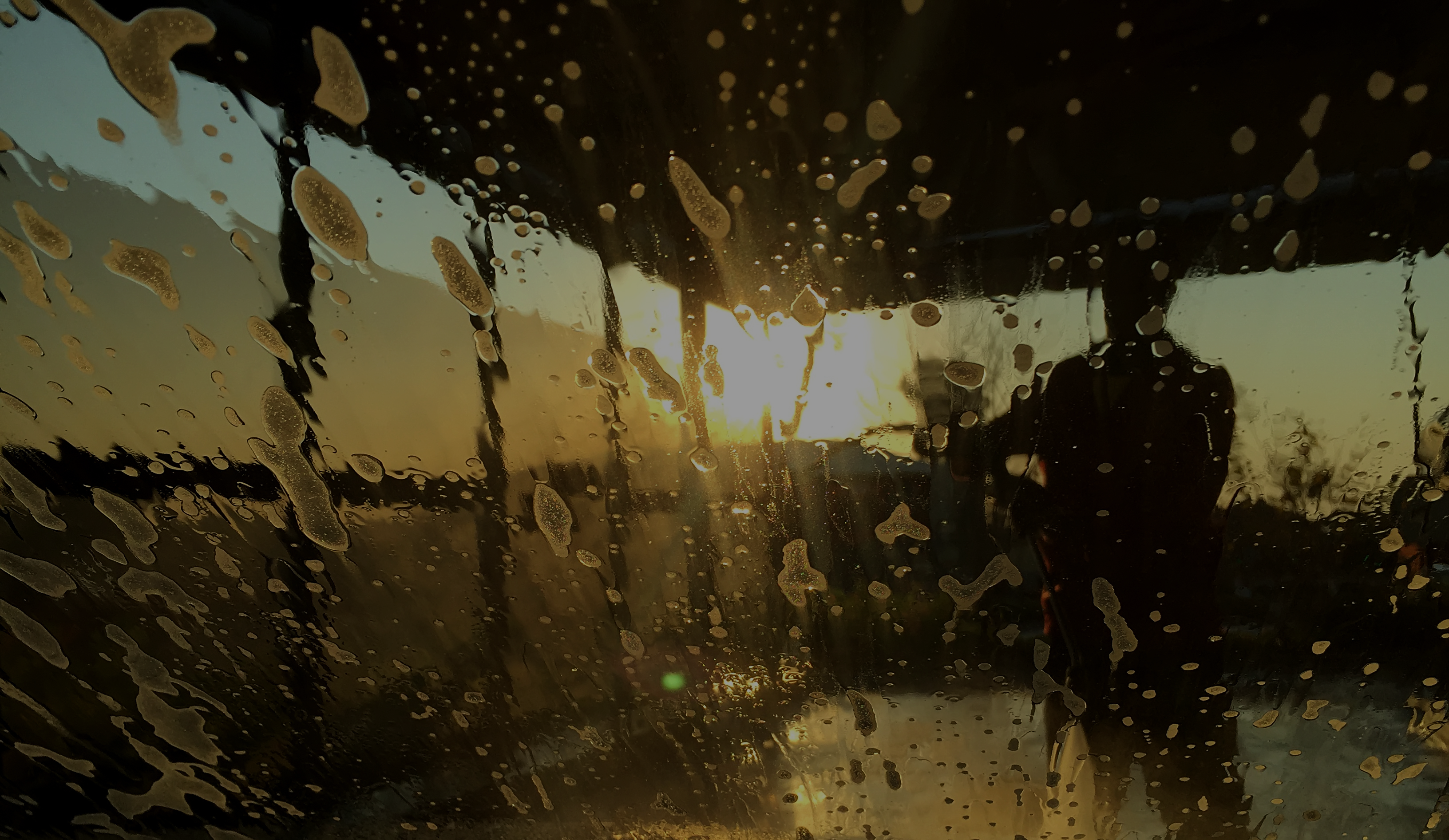19 Mar Bridging the Gap: The Rise of Drone Pressure Washing
As enthusiasts of cleanliness and maintenance, X-terior Pressure Wash has long celebrated the transformative power of traditional pressure washing. We’ve seen firsthand how it rejuvenates our homes, driveways, and roofs, effortlessly removing mold, mildew, and years of accumulated grime. This method, grounded in simplicity and effectiveness, has been a cornerstone in residential maintenance, providing not just aesthetic enhancement but also playing a crucial role in preserving our living environments.
Yet, as we stand on the cusp of technological innovation, the cleaning industry is witnessing a paradigm shift, expanding our horizons beyond the familiar confines of our homes and neighborhoods. The advent of drone pressure washing technology marks a bold leap into the future, one that carries the essence of traditional pressure washing into the vast and complex arena of commercial and industrial maintenance. This evolution from ground to air represents not just a shift in methods but a profound expansion of possibilities, bringing the principles of efficiency, safety, and environmental consciousness to grander scales.
Why, then, have we chosen to explore this new frontier in our latest blog? The answer lies in the potential we see in drone pressure washing to redefine the standards of cleaning and maintenance. Just as traditional pressure washing has been a game-changer for residential upkeep, drone technology promises to revolutionize the way we approach the cleaning of large-scale structures and areas inaccessible by conventional means. By delving into this topic, we aim to bridge the gap between the familiar and the futuristic, providing our readers with a glimpse into how the core values of precision cleaning and maintenance are being elevated to unprecedented heights.
In this exploration, we will navigate through the burgeoning world of drone pressure washing, uncovering its benefits, applications, and the profound impact it is poised to have on the commercial and industrial sectors. Join us as we embark on this exciting journey, extending the reach of our cleaning expertise from the ground beneath our feet to the skies above, and discover how innovation is reshaping the landscape of professional cleaning services.
The Evolution of Pressure Washing
The Traditional Approach and Its Drawbacks
Historically, pressure washing has been an essential component of maintenance for commercial and industrial facilities. Traditional methods, however, come with significant drawbacks. They often involve manual labor that can be both time-consuming and hazardous, particularly when dealing with high structures or complex machinery. The use of scaffolding, lifts, and ropes to reach high areas not only increases the risk of accidents but also adds to the project’s cost and duration.
Technological Advancements: Enter Drones
The advent of drone technology in pressure washing addresses these challenges head-on. Drones, equipped with low and high-pressure washing systems, can easily access and clean areas that would be difficult, dangerous, or even impossible to reach by human workers. This leap forward is not merely an incremental improvement but a complete overhaul of the cleaning process, offering benefits that are hard to overstate.
Market Insights: A Skyrocketing Trajectory
The Growth of the Drone Pressure Washing Market
The integration of drone technology into pressure washing is reshaping the market landscape. Initially niche, drone pressure washing is quickly gaining traction, expanding its reach across various sectors due to its undeniable advantages. Market analysts predict a compound annual growth rate (CAGR) that significantly outpaces the overall cleaning industry, propelled by the increasing adoption in commercial and industrial maintenance.
Driving Forces Behind the Adoption
Several key factors fuel the rapid adoption of drone pressure washing:
Innovative Efficiency: The ability to clean effectively and quickly, reducing downtime for maintenance.
Enhanced Safety: Minimizing the risk to human cleaners by eliminating the need for them to work at dangerous heights or in close contact with hazardous substances.
Cost Reduction: Lowering the overall cost of cleaning projects by cutting down on labor and equipment rental costs.
Environmental Sustainability: Offering a more eco-friendly cleaning option through precise control over water use and chemical application.
A Deep Dive into Technology and Benefits
The Mechanism of Drone Pressure Washing
Drone pressure washing systems typically consist of a high-strength, lightweight drone equipped with a high-pressure water pump, a water tank or hose connected to a ground-based water source, and a control system operated by a skilled technician. Advanced models incorporate GPS and AI to navigate and clean more autonomously, adapting to various surfaces and dirt levels.
Safety Enhancements
One of the most compelling advantages of drone pressure washing is the significant improvement in safety. Traditional cleaning methods, especially in high or hard-to-reach places, carry inherent risks of falls, accidents, and exposure to harmful substances. Drones eliminate the need for human presence in these precarious positions, dramatically reducing the likelihood of workplace injuries.
Efficiency and Environmental Impact
Drone pressure washing is not just safer but also faster and more environmentally friendly than traditional methods. Drones can cover large areas in a fraction of the time it would take manual workers, significantly reducing water and chemical usage thanks to their precision and efficiency. This aspect is particularly appealing to industries looking to minimize their environmental footprint.
Practical Applications and Success Stories
Revolutionizing Various Industries
The versatility of drone pressure washing is evident in its wide range of applications. In the real estate sector, it offers a safe and efficient way to maintain the exterior of high-rise buildings. For the transportation industry, drones provide an unparalleled solution for cleaning large vehicles and infrastructure. Energy companies benefit from drone technology to maintain wind turbines and solar panels, ensuring their optimal performance without the risks associated with traditional cleaning methods.
Case Study: Preserving an Icon – The Suspension Bridge Maintenance Initiative
Background
The Golden Span Bridge, an iconic suspension bridge spanning a wide river, serves as a vital transportation link and a historical landmark. With its towering pylons reaching heights far beyond the capabilities of ground-based pressure washing equipment and its intricate cable systems posing unique accessibility challenges, maintaining the bridge’s structural integrity and aesthetic appeal had always been a complex task. The traditional approach required costly scaffolding, specialized access equipment, and significant traffic disruptions, all while exposing workers to high-risk conditions.
The Drone Pressure Washing Solution
Faced with the daunting task of cleaning the bridge without disrupting its daily operations or compromising on worker safety, the maintenance team turned to drone pressure washing technology. This innovative approach involved the use of heavy-duty drones equipped with high-pressure water jets, capable of reaching and cleaning all parts of the bridge’s structure, including the upper sections of the pylons and the undersides of the deck.
Implementation
The drones were deployed from strategic locations along the bridge, operated by a team of trained pilots and maintenance specialists. Using real-time video feeds, the operators could precisely control the drones, ensuring thorough cleaning of even the most hard-to-reach areas. The drones were equipped with eco-friendly cleaning agents and water recycling systems to minimize environmental impact.
Results
- Enhanced Safety: By utilizing drones, the need for human workers to physically access dangerous heights or work over water was eliminated, drastically reducing the risk of accidents.
- Unprecedented Efficiency: The drone-based cleaning operation was completed in a fraction of the time required for traditional methods, with minimal disruption to bridge traffic. The project, previously taking weeks of preparation and execution, was accomplished in just a few days.
- Cost Reduction: The adoption of drone technology significantly lowered the overall cost of the maintenance project. Savings were realized through reduced labor costs, the elimination of expensive scaffolding and access equipment, and minimized operational downtime.
- Environmental Benefits: The precise application of water and cleaning agents by drones reduced waste and prevented harmful chemicals from entering the river, showcasing a commitment to environmental sustainability.
Conclusion
The Golden Span Bridge maintenance initiative serves as a pioneering example of how drone pressure washing can address the challenges of cleaning large-scale infrastructure. This case study not only highlights the practical benefits of drone technology in terms of safety, efficiency, and cost but also underscores its potential to facilitate environmentally responsible maintenance practices. As drone technology continues to evolve, its applications in preserving and maintaining our world’s infrastructure promise to become even more valuable, ensuring the longevity and beauty of iconic structures for generations to come.
The Future Landscape: Trends and Predictions
Technological Innovations on the Horizon
The future of drone pressure washing looks bright, with ongoing advancements in drone technology and cleaning systems. Expectations include the integration of more sophisticated AI for autonomous operation, improved battery life for longer operation times, and advanced sensors for more precise cleaning.
Expanding Applications and Global Adoption
As technology progresses, the applications for drone pressure washing are set to widen even further. This expansion is not limited to specific sectors but extends to a global scale, with businesses worldwide recognizing the value of drone technology in their maintenance and cleaning operations.
The Role of Regulations and Industry Standards
With the rapid growth of drone applications, regulatory frameworks and industry standards will evolve to ensure safe and effective operations. Collaboration between technology providers, regulatory bodies, and industry stakeholders will be crucial in shaping a future where drone pressure washing can reach its full potential.
A Cleaner, Safer, and Greener Future
Drone pressure washing embodies the innovative spirit of the modern age, offering a solution that is not just about keeping surfaces clean but about reimagining what is possible in maintenance and environmental stewardship. As we look to the future, the continued evolution of this technology promises to bring about cleaner, safer, and more sustainable commercial and industrial environments. Embracing drone pressure washing is not merely an operational decision but a step towards a more efficient and responsible world.



